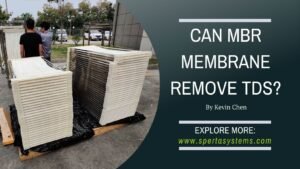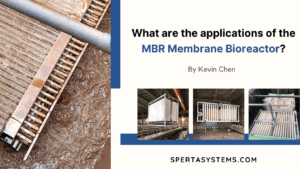Clean water is a basic necessity, and as our urban areas grow, so does the need for effective wastewater treatment. With many methods available, it’s essential to understand which system is best suited for specific requirements.
The two prominent wastewater treatment methods are the Membrane Bioreactor (MBR) and the Activated Sludge Systems. But how do they differ, and which one is more efficient?
Both systems have their unique features, advantages, and challenges. Let’s delve deeper to understand them better.
What is MBR (Membrane Bioreactor)?
MBR is a modern wastewater treatment method that combines conventional biological treatment with membrane filtration. In simple terms, it uses a combination of bacteria and special membranes to clean the water. The result? High-quality treated water is often clearer and cleaner than what traditional methods produce.
How Does the Activated Sludge System Work?
Activated sludge systems have been around for a long time. They rely on a biological process where bacteria break down waste in the water. The “sludge” is the mass of bacteria working to clean the water. Once they’ve done their job, the sludge settles to the bottom, leaving cleaner water on top.
Key Differences Between MBR and Activated Sludge Systems
| Feature | MBR | Activated Sludge Systems |
|---|---|---|
| Treatment Efficiency | Higher quality output | Standard quality output |
| System Footprint | Compact | Requires larger area |
| Operational Complexity | Less manual intervention | Regular monitoring needed |
| Cost Implications | Higher initial cost, potential lower operational costs | Lower initial cost, potential higher operational costs |
| Energy Consumption | Higher due to membrane filtration | Lower, more passive |
Treatment Efficiency
MBR often produces water of higher quality than activated sludge systems. The added membrane filtration step in MBR ensures that even tiny particles get removed.
System Footprint
MBR systems are more compact, making them ideal for places with limited space. On the other hand, activated sludge systems require larger areas for the settling ponds.
Operational Complexity
While MBR systems might seem more complex due to the added membrane component, they often require less manual intervention than activated sludge systems, which need regular monitoring to ensure the sludge settles appropriately.
Cost Implications
MBR systems can be more expensive initially due to the cost of membranes. However, their operational costs might be lower in the long run. Activated sludge systems, while cheaper to set up, can have higher ongoing costs.
Energy Consumption
MBR systems generally consume more energy due to the membrane filtration process. Activated sludge systems, being more passive, tend to use less energy.
Advantages and Disadvantages of Each System
MBR systems, with their high-quality output and compact design, are great for areas with space constraints or where water reuse is a priority. However, their higher energy consumption and initial cost can be a drawback.
Activated sludge systems, being a tried and tested method, are reliable and can be cheaper. However, they require more space and might not produce water as clean as MBR systems.
Conclusion
Choosing between MBR and activated sludge systems involves specific needs, budget, and available space. While MBR offers high-quality treated water in a compact design, activated sludge systems are a reliable and traditional method. It’s essential to assess individual requirements and consult experts before making a decision.
The above is information about the difference between MBR and the activated sludge process. If you still have questions about the membrane bioreactor or need to purchase MBR membranes, don’t hesitate to contact SPERTA.
Shanghai SPERTA Environmental Technology Co., Ltd. has specialized in producing water treatment products for many years. The company has the core technology of producing MBR membrane components. It has a high production capacity, aiming to build a high-quality brand of MBR production and sales all over the world. If you have any needs, please feel free to contact us.









